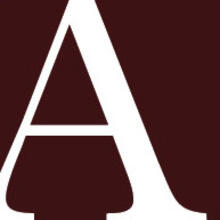The percentage of Americans living in poverty is the lowest it has been in over 20 years. Nevertheless, over against this positive news is the fact that a sixth of the nation’s children remain poor. Indeed, the Census Bureau has reported that poverty among children has actually deepened—a reflection of declines in past years in the proportion of children receiving benefits like food stamps. Most, though, live in families with a working parent. This latter circumstance has made it possible for an insufficiently well-known tax credit initiative—the Earned Income Tax Credit—to move many of them beyond a poverty-level existence.
Indeed, a recent study by the non-profit Center on Budget and Policy Priorities, A Hand Up, reported that this single federal initiative has lifted more families out of poverty than any other program. It involves what is known as a refundable credit: if the credit amount is larger than the family’s income tax bill, the family gets a refund check. It also helps make work worthwhile for welfare recipients who enter the work force. Many who work continue to have very low incomes and cannot make ends meet on their earnings alone. But E.I.T.C., besides providing an incentive to work, boosts the income of former recipients to something approaching a liveable income.
Although individuals can benefit too, E.I.T.C. works most advantageously for hard-pressed families with dependent children. The study cites the example of a family of four with two children headed by a full-time, year-round worker earning $7 an hour. The wages alone, amounting to $13,500 a year, would leave the family several thousand dollars below the poverty line. But by applying for E.I.T.C. when filling out a tax return each year, the family would qualify for $3,486. This would raise its income to an amount that would almost reach the poverty line. Then, if the family were fortunate enough to live in one of the 15 states (including the District of Columbia) that offer their own E.I.T.C., there would be a further addition to their income. For instance, a state credit at 20 percent of the federal credit would amount to nearly $700. This added amount would raise them over the poverty line. Immigrants as well as U.S. citizens are eligible so long as they are legally authorized to work.
Besides helping with day-to-day expenses, E.I.T.C. recipients can use their cash refunds to assist with other pressing needs, like housing. The National Low Income Housing Coalition has pointed out in its annually updated report, Out of Reach, that housing costs have risen so sharply that in no county in the nation can minimum wage workers afford to rent a home at the Fair Market Rent. The refund from E.I.T.C. could provide for the security deposit on an apartment in an area where better jobs might be found. Advance payments on the yearly refund are also available on a monthly basis through employers who complete a required form.
For all the good E.I.T.C. does in terms of supporting work and in alleviating child poverty, however, it falls short of its potential. Besides being insufficiently known, it is not easy to understand, particularly for people leaving welfare, who may never before have dealt with a tax return. Filling out forms like these can be both intimidating and confusing, especially for applicants with limited education. To pay for the services of a commercial tax preparer cuts into the refund. The I.R.S. does have a toll free number that applicants can call to receive the free services of a VITA (Volunteer Tax Assistance) tax preparer trained by the I.R.S. VITA locations, though, are sparse. We called the number, 1-800-829-1040 (often busy); then, after many menu selections—none of which referred to VITA—we finally heard a voice that told us that for all of New York City, for example, there is only one location. Fortunately, various local community groups here and in other cities do provide free help. But far more outreach is necessary in low-income communities to make the program better known, along with information about where help can be found for completing the tax forms.
A further drawback to the full potential of the program stems from the fact that currently only 15 states provide their own E.I.T.C. that piggybacks on the federal E.I.T.C. in regard to state and local taxes. In this era of surpluses, other states should lend their weight to raising the income of low-wage workers up to the federal poverty level ($16,700 for a family of four). President Clinton has proposed expanding E.I.T.C. by $23 billion over the next 10 years. It would be the fourth such expansion in the program’s quarter-century history. Given E.I.T.C.’s proven success and the bipartisan support it has received since its inception in 1975, this proposal deserves full Congressional support.







